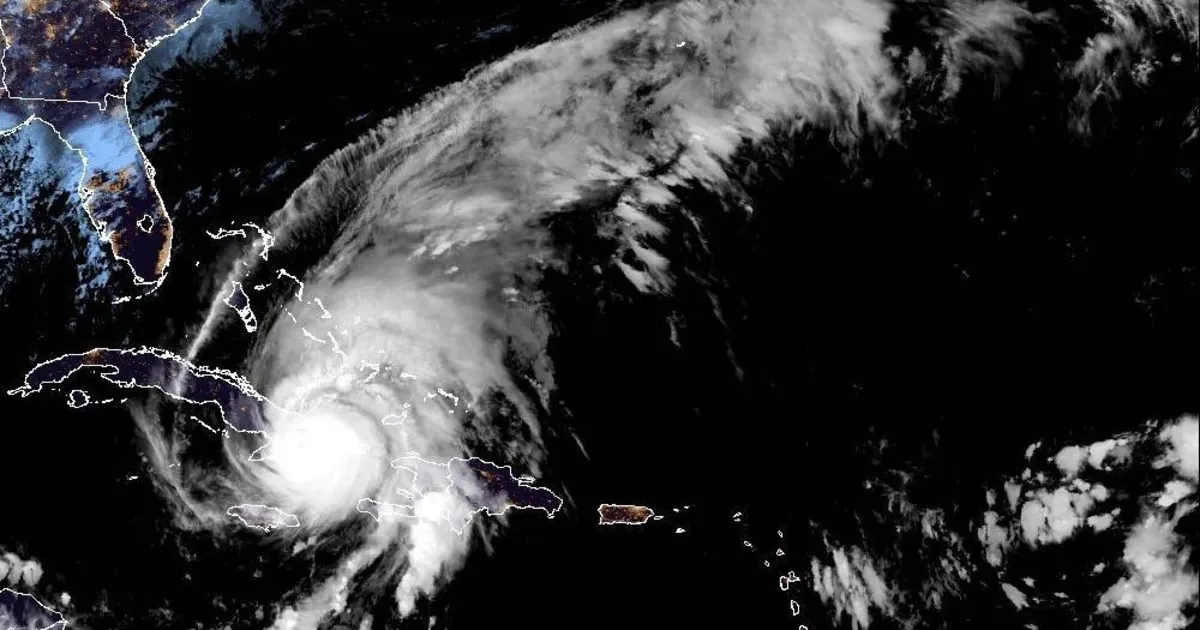
Hurricane Melissa made landfall over eastern Cuba near the city of Chivirico early Wednesday, hitting as an extremely dangerous Category 3 storm, according to the Miami-based National Hurricane Center (NHC). The hurricane had previously struck Jamaica, where it was recorded as one of the strongest Atlantic hurricanes on record, causing significant destruction.
As Hurricane Melissa approached eastern Cuba, it brought with it damaging winds, heavy rainfall, and a perilous storm surge. In preparation for the storm, approximately 735,000 people were evacuated, as confirmed by Cuban President Miguel Díaz-Canel Bermúdez during a Tuesday night announcement. A hurricane warning was issued for the provinces of Granma, Santiago de Cuba, Guantanamo, Holguin, and Las Tunas, as well as for the southeastern and central Bahamas.
Upon reaching Cuba, Hurricane Melissa had top sustained winds of 120 mph, which decreased slightly to 115 mph by the time the NHC issued its 5 a.m. EDT advisory. According to the Saffir-Simpson Hurricane Wind Scale, a hurricane is classified as major when it reaches Category 3 status with winds exceeding 111 mph. The storm was moving northeast at 12 mph, with its core located about 60 miles west of Guantánamo and 230 miles south of the central Bahamas. The NHC urged residents of Cuba to stay sheltered and advised that preparations in the Bahamas be finalized swiftly.
Forecasts indicated that Hurricane Melissa would weaken as it traversed Cuba throughout the morning; however, it was expected to maintain its strength as it continued across the southeastern or central Bahamas later on Wednesday. The storm is projected to approach Bermuda late Thursday, where a hurricane watch is currently in effect. The NHC warned that Melissa could still be a formidable hurricane at this point, with ongoing heavy rainfall potentially leading to life-threatening flooding and numerous landslides, according to U.S. forecasters.
Before hitting Cuba, Hurricane Melissa struck Jamaica on Tuesday with top sustained winds recorded at 185 mph. The storm was anticipated to produce a storm surge of up to 12 feet in the affected areas, as well as drop as much as 20 inches of rain in certain parts of eastern Cuba. Michael Brennan, the NHC director, noted that numerous landslides were likely in these regions, exacerbating the challenges faced by residents.
The impact of Hurricane Melissa could further complicate Cuba's already severe economic crisis, which has led to prolonged power outages, fuel shortages, and food scarcity. In a televised address, President Díaz-Canel acknowledged the extensive damage anticipated from the storm and emphasized that no resources would be spared in protecting the population's lives. He urged citizens not to underestimate the storm's power, calling it the strongest hurricane ever to hit Cuba.
As preparations continued in Cuba, officials in Jamaica began assessing the damage left in the wake of Hurricane Melissa. Reports of extensive destruction emerged from various regions, including significant flooding in southern Clarendon and southwestern St. Elizabeth. Desmond McKenzie, deputy chairman of Jamaica's Disaster Risk Management Council, stated that four hospitals had sustained damage, with one losing power and necessitating the evacuation of 75 patients. By late Tuesday, over half a million customers were without electricity, as widespread downed trees and power lines contributed to extensive flooding.
The Jamaican government expressed hopes to reopen all airports by Thursday to facilitate the swift distribution of emergency relief supplies. Tragically, the storm has already been linked to seven fatalities across the Caribbean, including three in Jamaica, three in Haiti, and one in the Dominican Republic, where one individual remains missing.